Corinth and Nafplio
Corinth is an hour’s drive from Athens. Once one reaches the outskirts of Athens’ city center, the road to Corinth is smooth sailing. Our first stop was the Corinth Canal. Work began on the four-mile-long narrow canal (only seventy feet wide) in 1882 and was completed in 1893. This turquoise-blue canal that cuts through the isthmus allows direct transit between the Aegean and Ionian Seas. Soaring surrounding walls tower over the canal.
The concept of building the canal goes back centuries. It was visualized as early as 602BC by Emperor Periander and subsequently by emperors Poliorcetes, Julius Caesar, Caligula, and Hadrian.
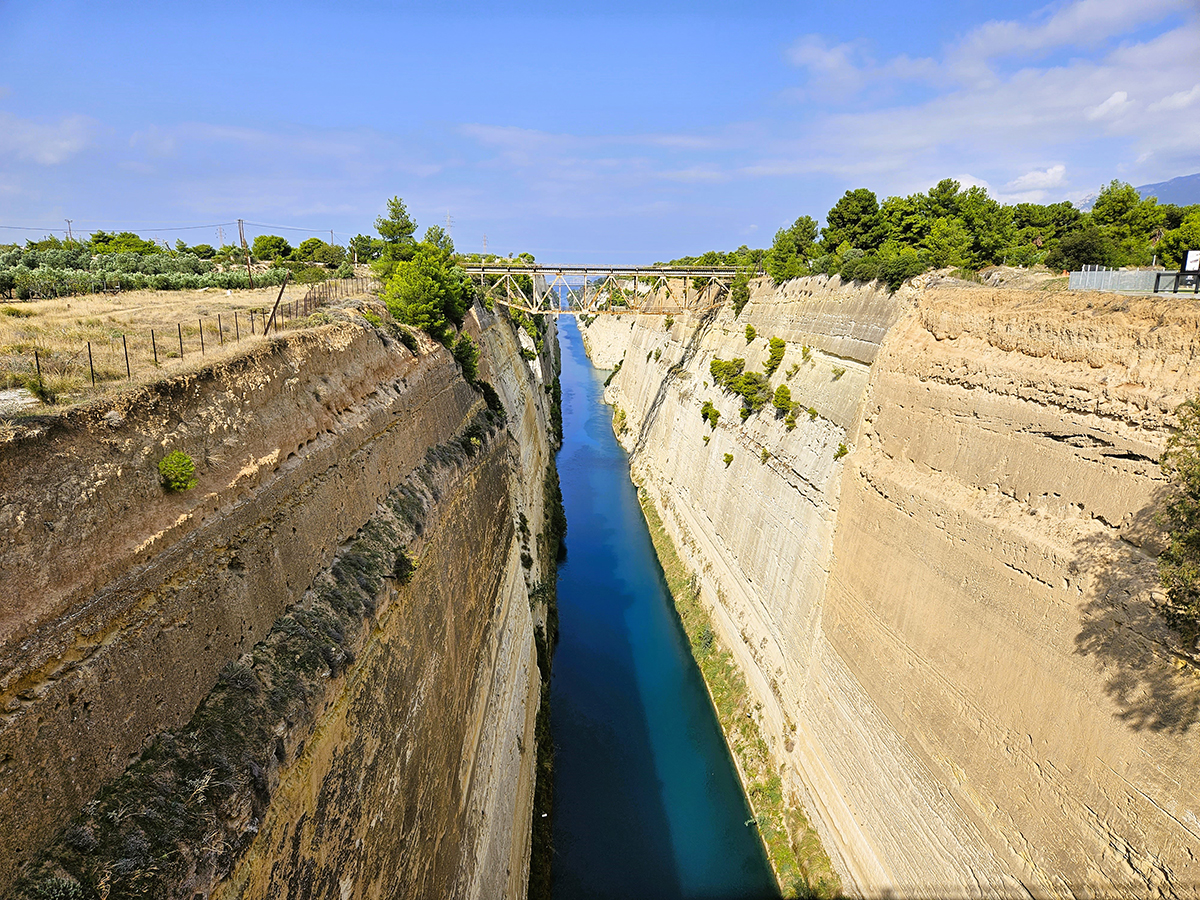
The famous Doric-style Temple of Apollo is a ten-minute drive from the canal.
Characterized by monolithic columns quarried from limestone near the temple, it is one of the earliest structures to use Doric, Ionic, and Corinthian styles in a single monument. Only seven columns remain today.
Corinth was one of Greece’s most prominent and thriving cities, said to have had a population of ninety thousand people in 400 BC. The city was demolished by Roman invaders in 146 BC. When the Romans subsequently rebuilt Corinth in 44 BC, they named it the capital of Greece. The temple overlooks the historical ruins of the ancient Roman city.
I recommend that one take a guided tour to bring the temple’s history and the Roman city’s remains to life.
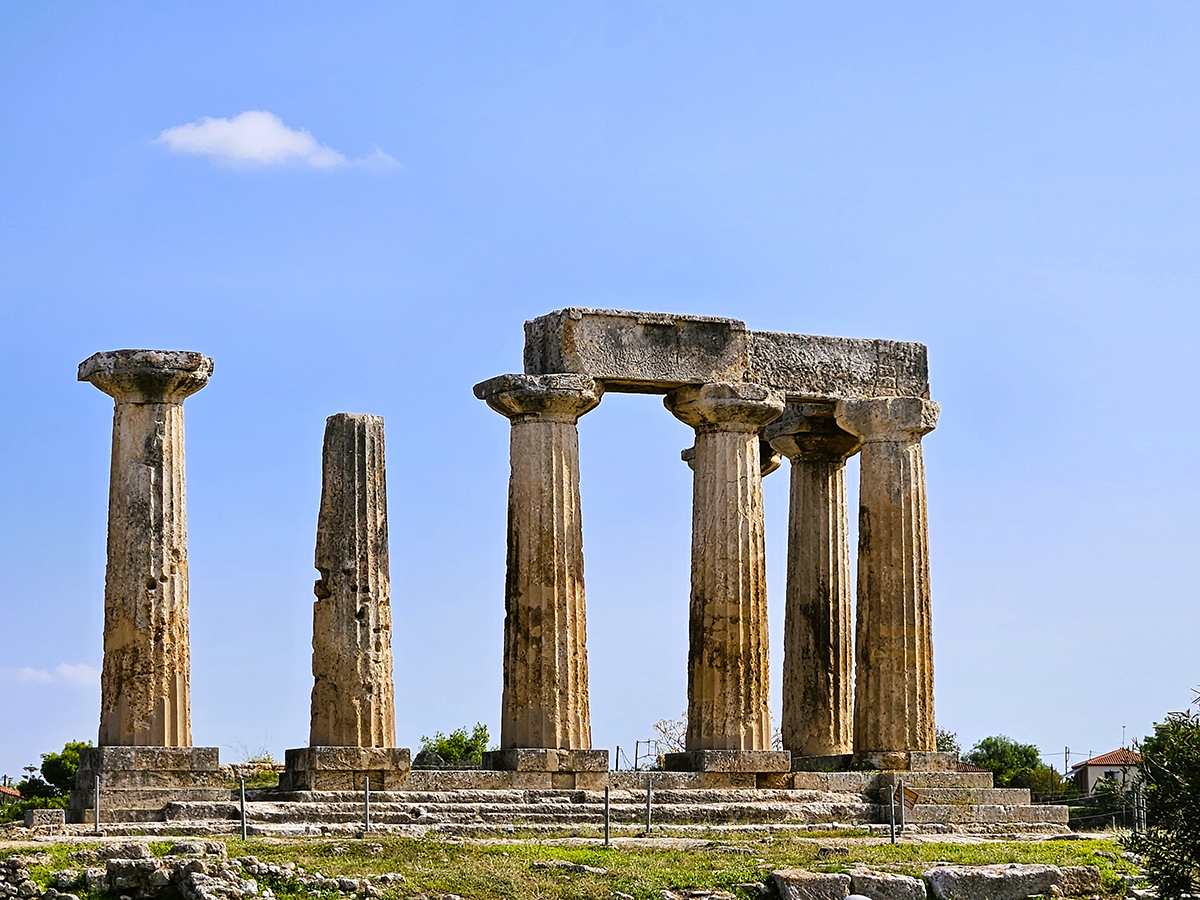
At lunchtime, we made our way downhill to Loutraki – the seaside neighborhood of Corinth, where we found an authentic, traditional, family-run seafood restaurant reminiscent of those I frequented as a traveling teenager.
From the seafront in Loutraki, there’s a beautiful drive along a winding road into the mountains that offers panoramic views of the landscape and descends to Vougliagmeni Lagoon. The lagoon is a little paradise of calm, warm waters with a beach café, lounging chairs, and umbrellas, all wrapped in the arms of the surrounding mountains. Another perfect spot to relax, have lunch, and slip into a meditative mood.
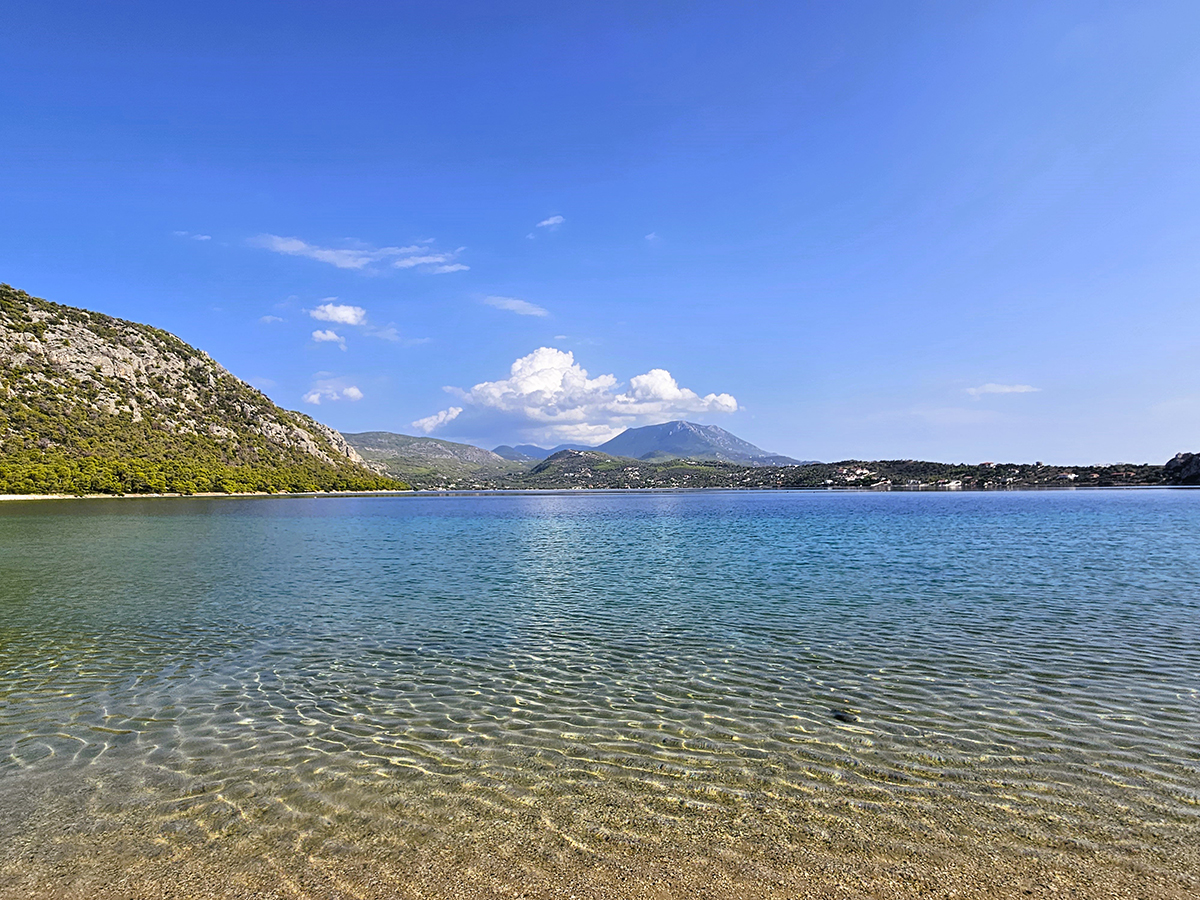
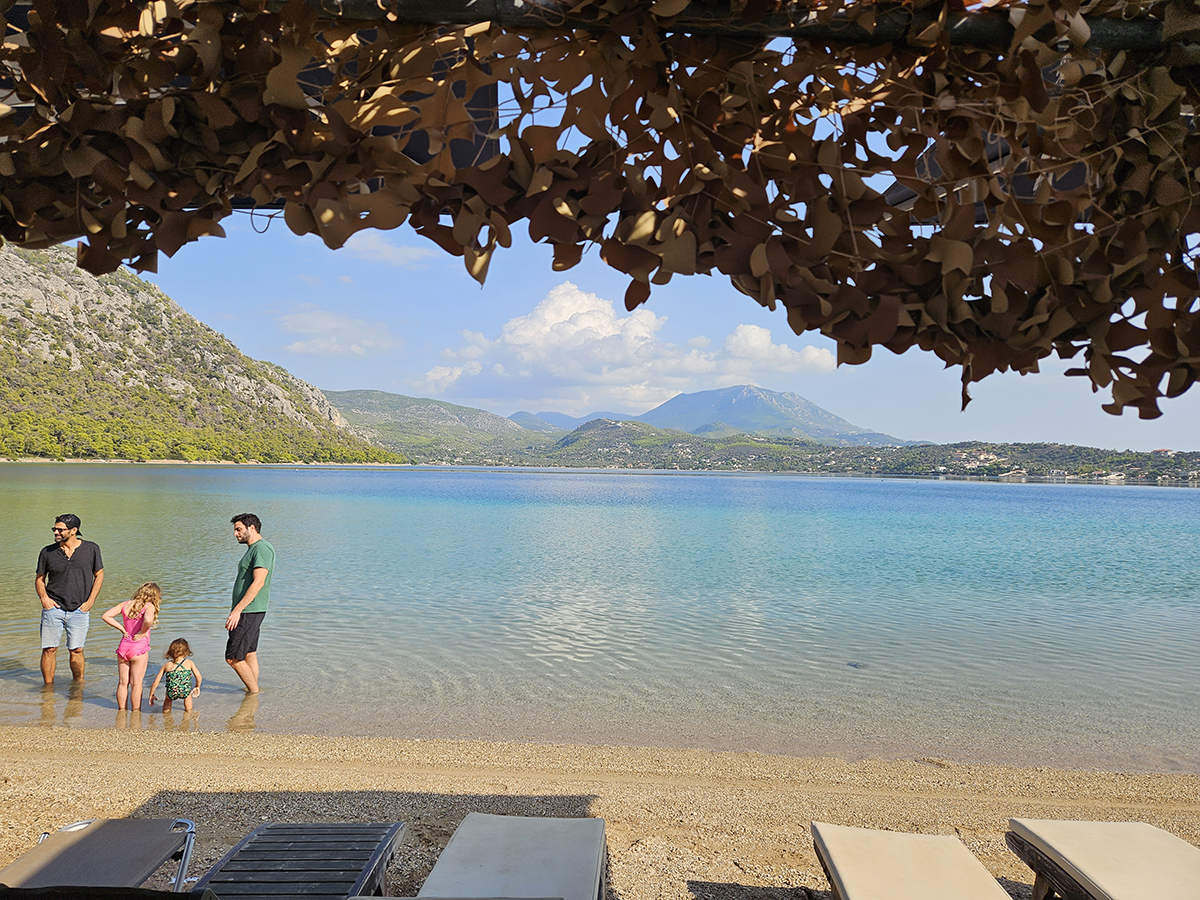
Naflio
Nafplio is like an advertisement for the must-see towns of the Peloponnese region of Greece.

We stayed in one of the atmospheric, small family-run hotels- Amymone and Andiandi, hidden in the maze of lanes in the old town. The breakfast room and Wild Duck restaurant, which offers a variety of delicious dishes, has indoor and outdoor seating with views of the promenade and boats anchored in the harbor.
 The two buildings of the hotel- across the street from one another.
The two buildings of the hotel- across the street from one another.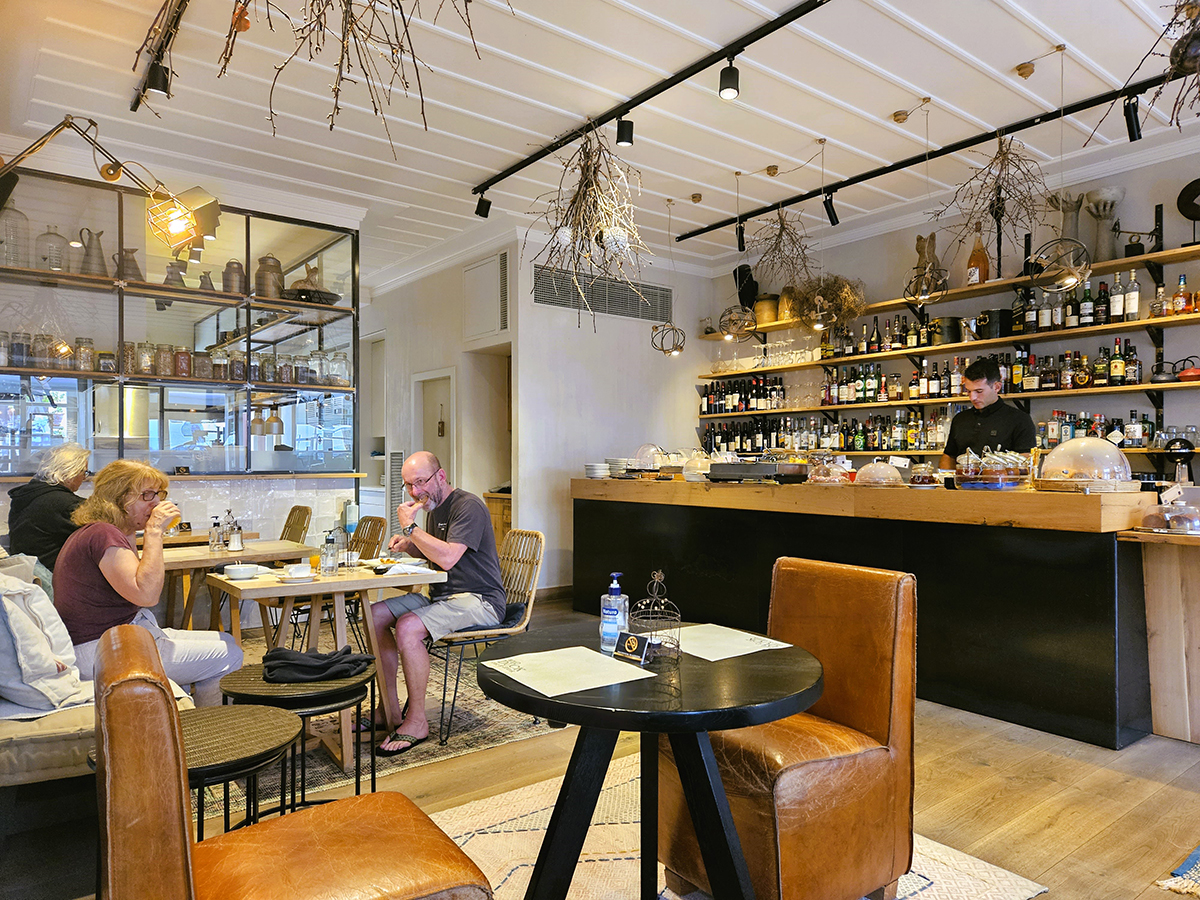
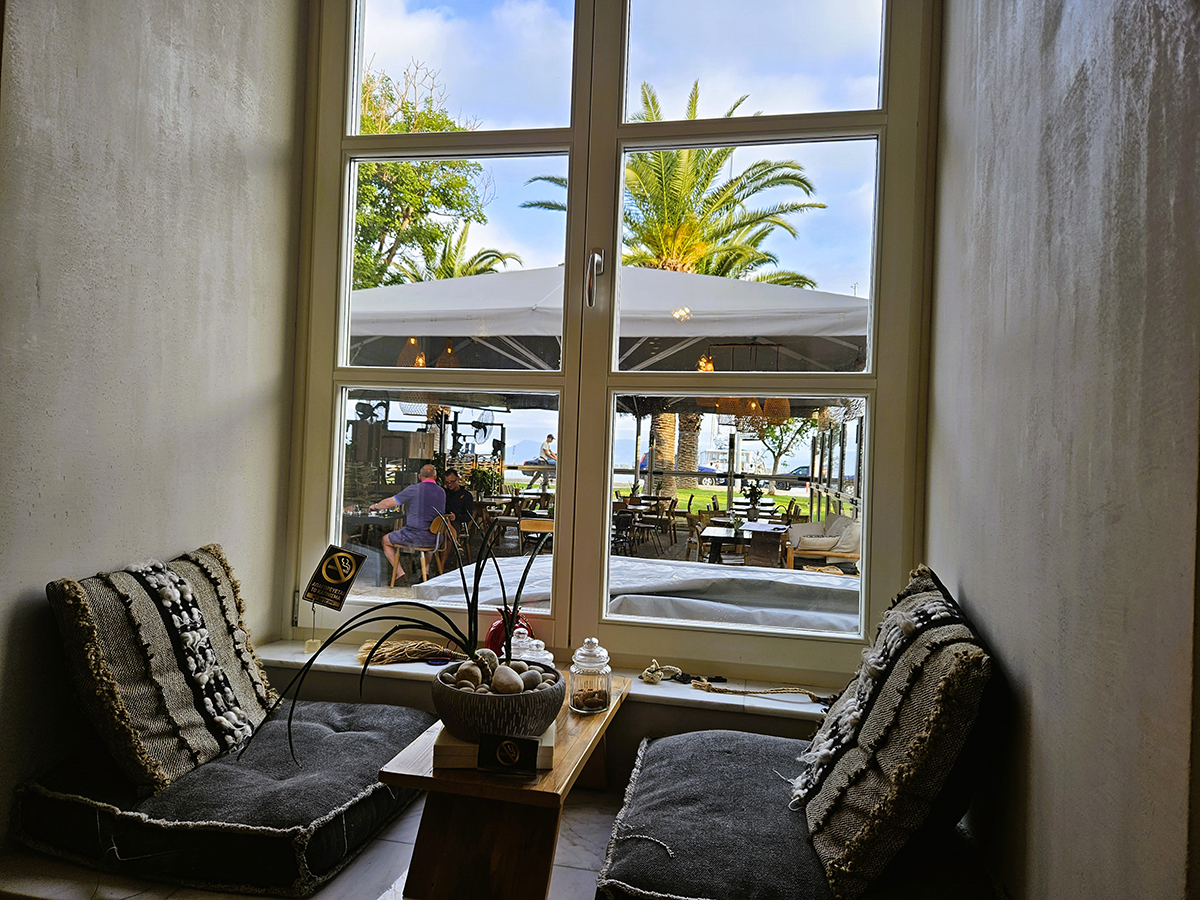
The Palamadi fortress, built by the Venetians, sits on a crest above the town.
It was built in the early 18th century. In 1840, it was transformed into a prison for the next one hundred years. Some locals will tell you that you must climb 999 steps to reach the castle, while others insist it’s only 857 steps. I guess one has to make the climb oneself to know how many it is!
 Palamadi Fortress sits above this church square.
Palamadi Fortress sits above this church square.Like all Greek towns and villages, Nafplio comes alive in the mornings and becomes a ghost town from lunchtime until around 7 p.m., when the cafés, bars, and seaside promenade come back to life. (It has a vibrant and substantial outdoor market on Wednesdays and Saturdays.)
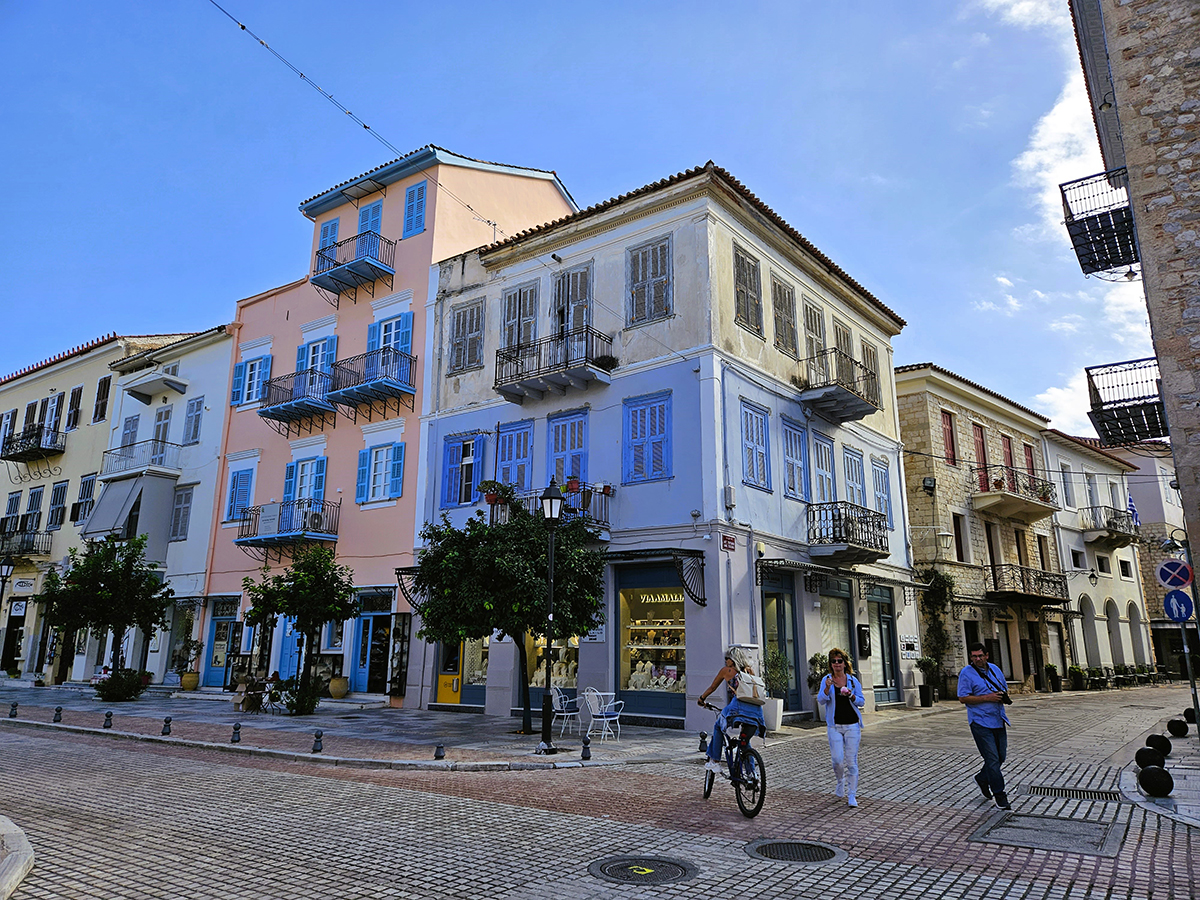 A typical quiet afternoon in Nafpio.
A typical quiet afternoon in Nafpio.The early mornings and evenings are magical when the Bourtzi Fortress, which rests on an island at sea, glows in the gentle sunshine.
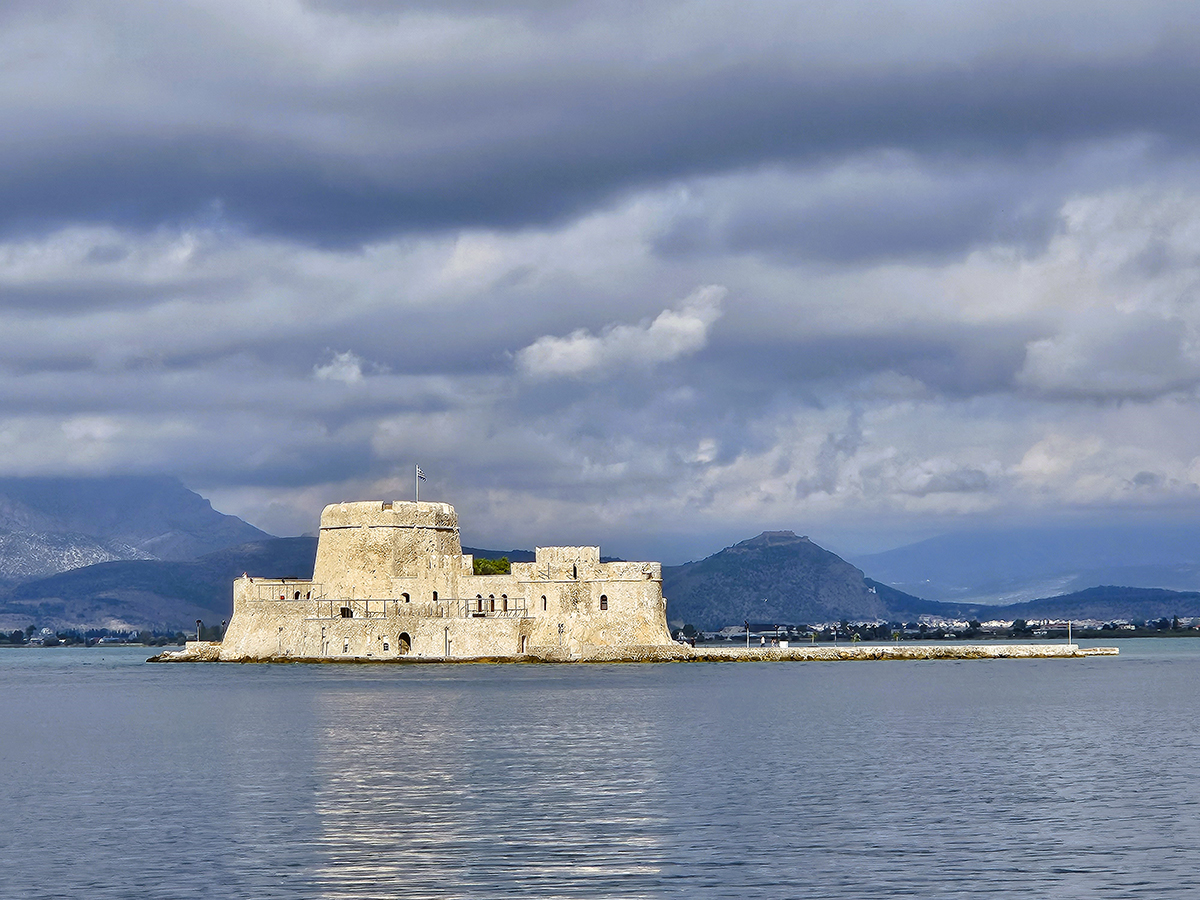
A walk along the promenade past the Amphitryon Hotel – continues to follow a path where swimming pools have been created in the sea. Beyond the pools, the path continues to meander between the turquoise ocean and soaring, statuesque rock formations covered in white bougainvillea, purple vines, and massive cacti covered in colored buds about to bloom.
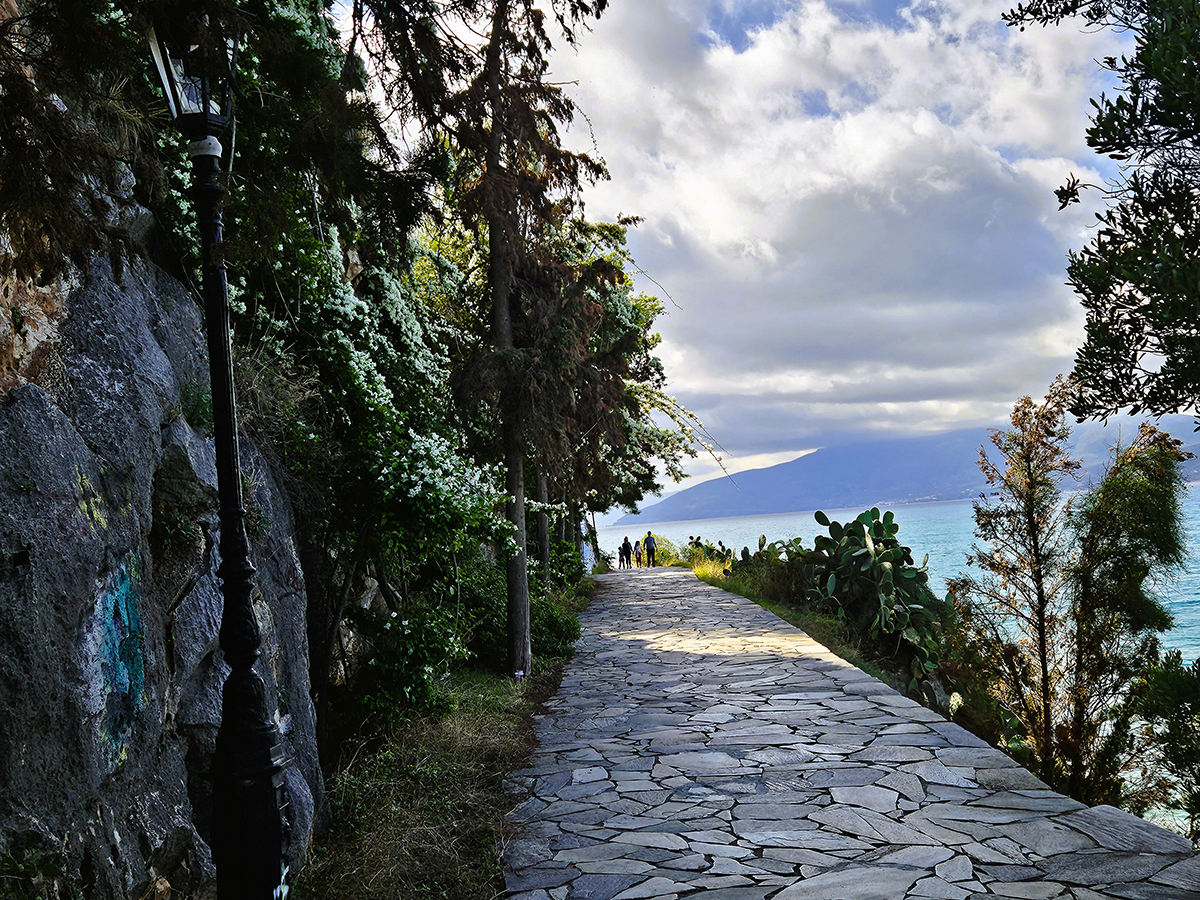
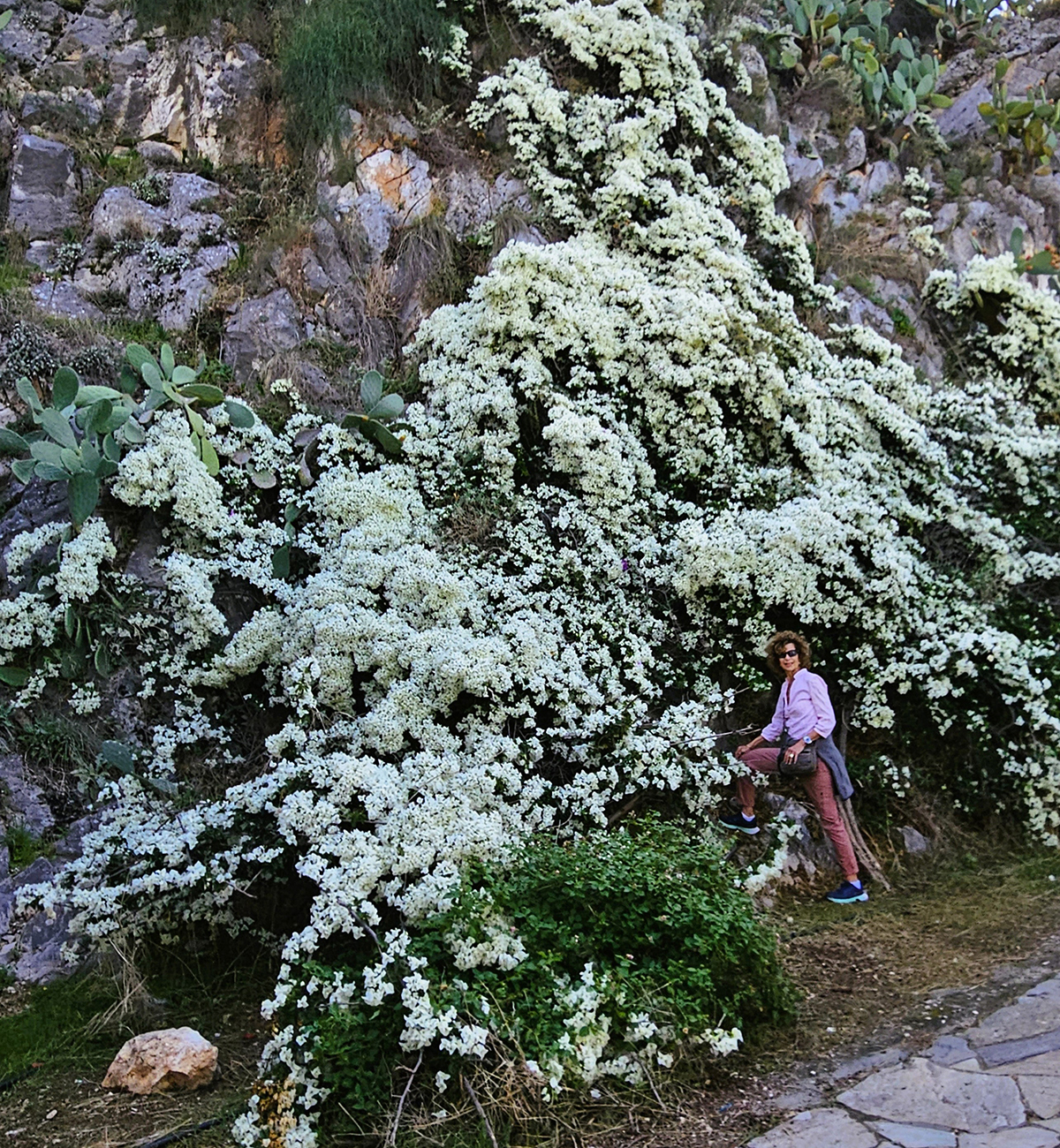
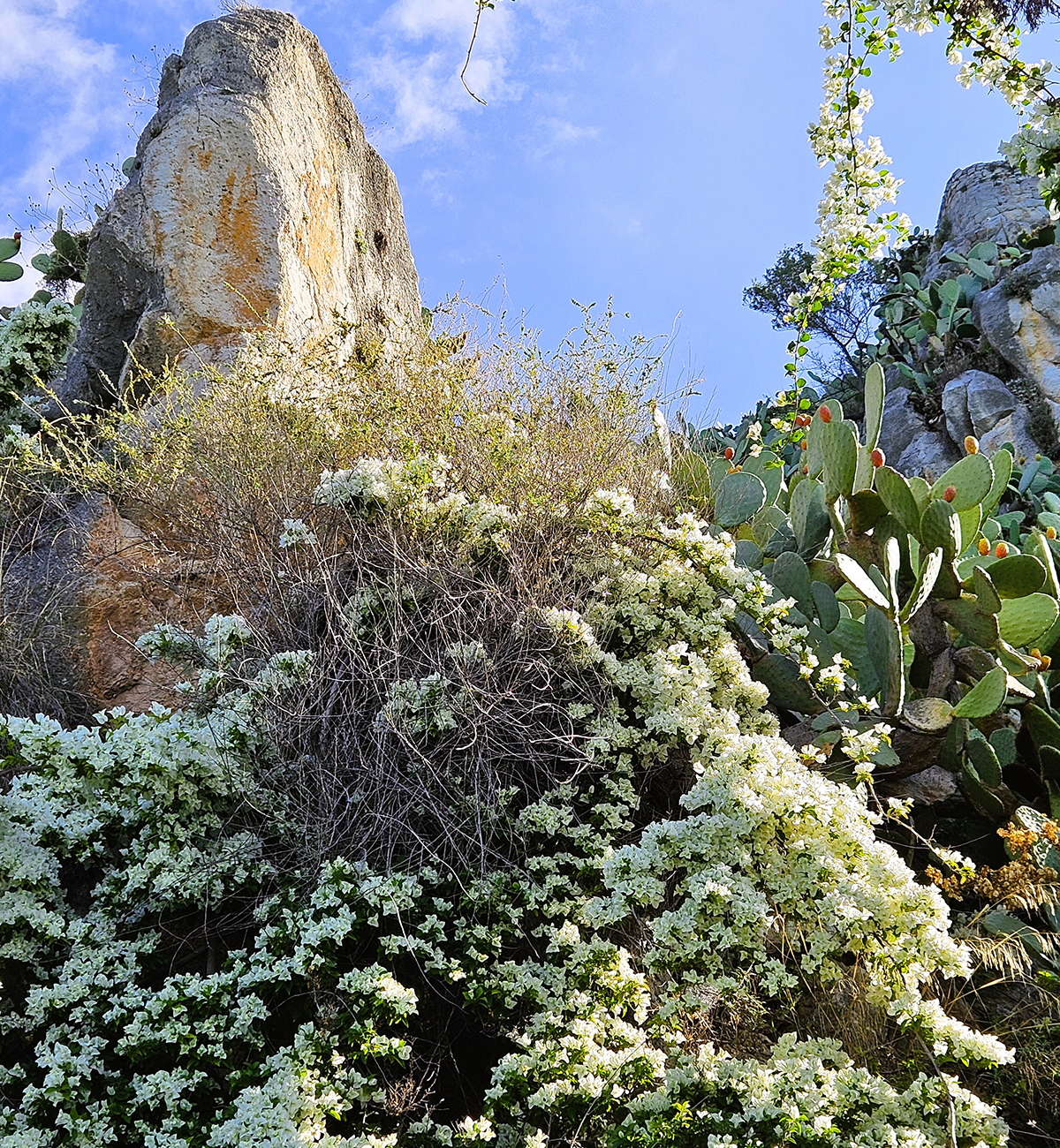
In the distance, people lazed on a sheltered beach while others swam and snorkeled in the calm, clear waters.
We discovered that this was Paralia – Arvanitia Beach, which can also be reached by car. It shelters against a forest of trees below Palamidi Castle. During summer, umbrellas, sunbeds, drinks, coffee, and light snacks are available.
Parking is free. There are also clean toilet facilities, which are open all year round.

At night, boutiques, bars, and restaurants illuminate the pedestrian lanes of Nafplio from 7 p.m. until the early hours of the morning. The chatter, laughter, clinking of glasses, and cutlery below our bedroom window became my bedtime lullaby.
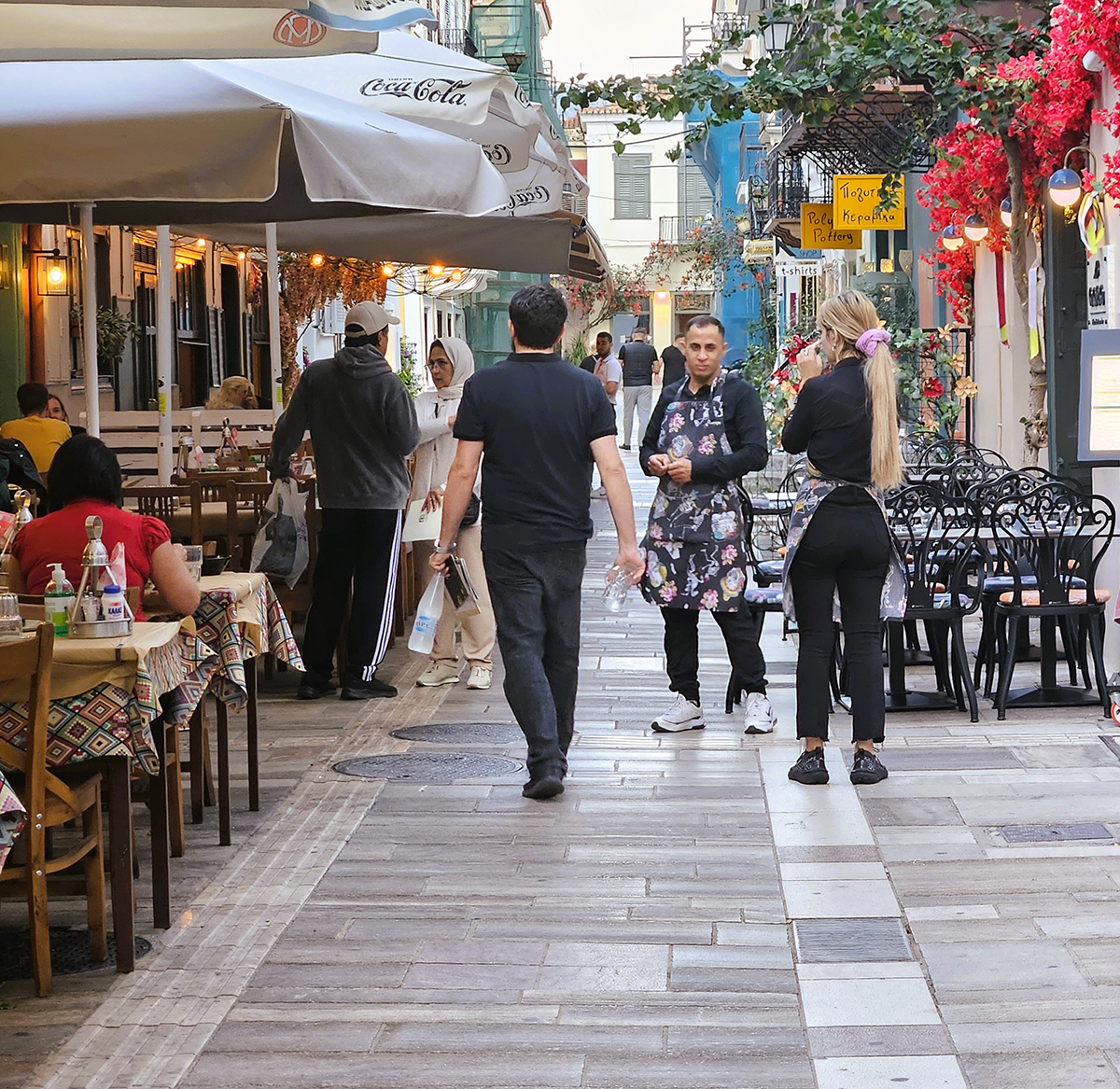
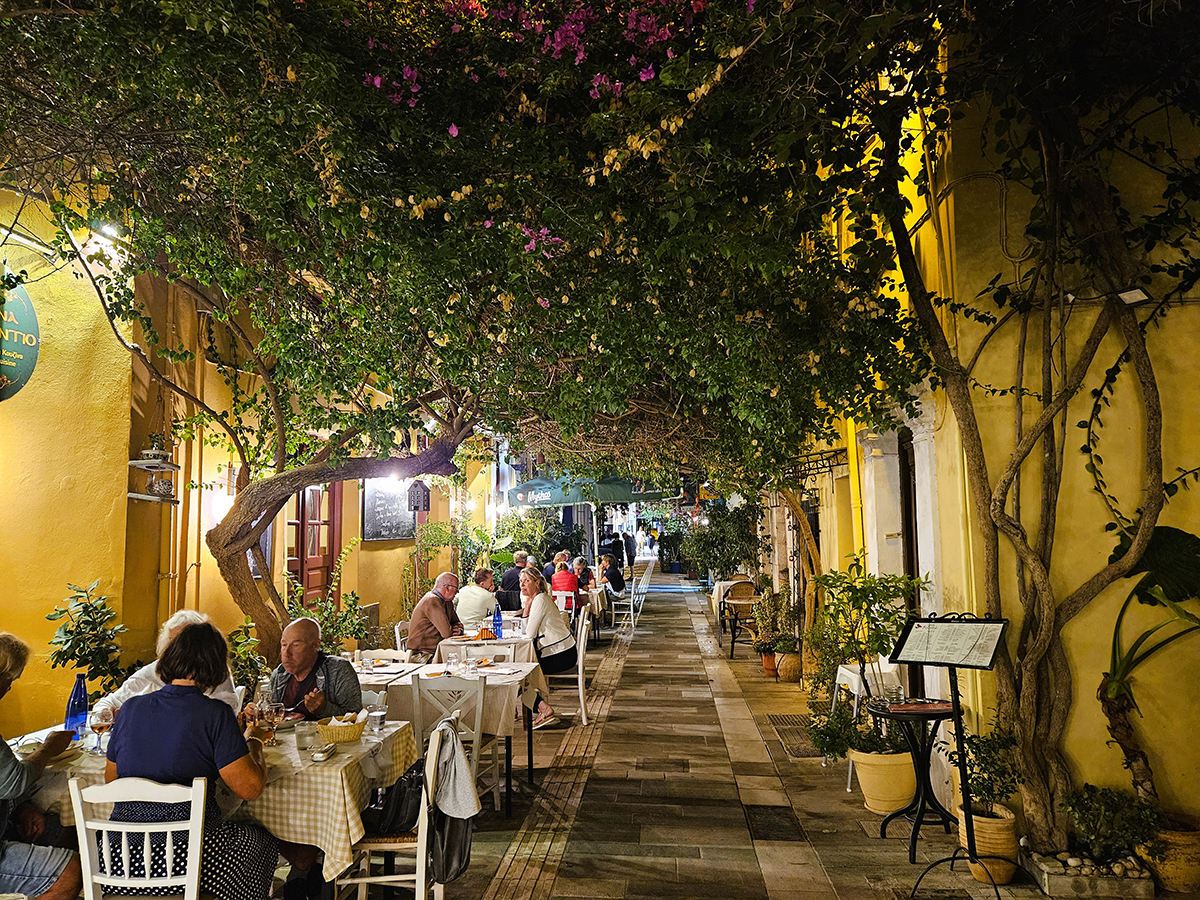
We made Nafplio our base for several nights and, from there, set out on a day trip to explore Mycenae and Epidaurus.
